
Plastic Food Container Storage Ideas 4 Easy Ways To Organise Your Tupperware And Food Storage
Pile your containers in and then neatly line up the lids between the ridges. Everything stays neatly stacked and the lids stand upright, so you can easily see what you've got. The organizer holds 12 plastic containers and their matching lids. And it works with most major brands (think: Rubbermaid, Ziploc, Glad, and even Target's containers).

How to Organize Plastic Food Storage Containers In The Kitchen YouTube
Empty plastic containers are perfect for storing art supplies. Use them to hold crayons, markers, paintbrushes, or glue sticks. Decorate the containers with colorful tape or let your kids personalize them with stickers. Stack them on a shelf or put them in a drawer for easy access during craft time.
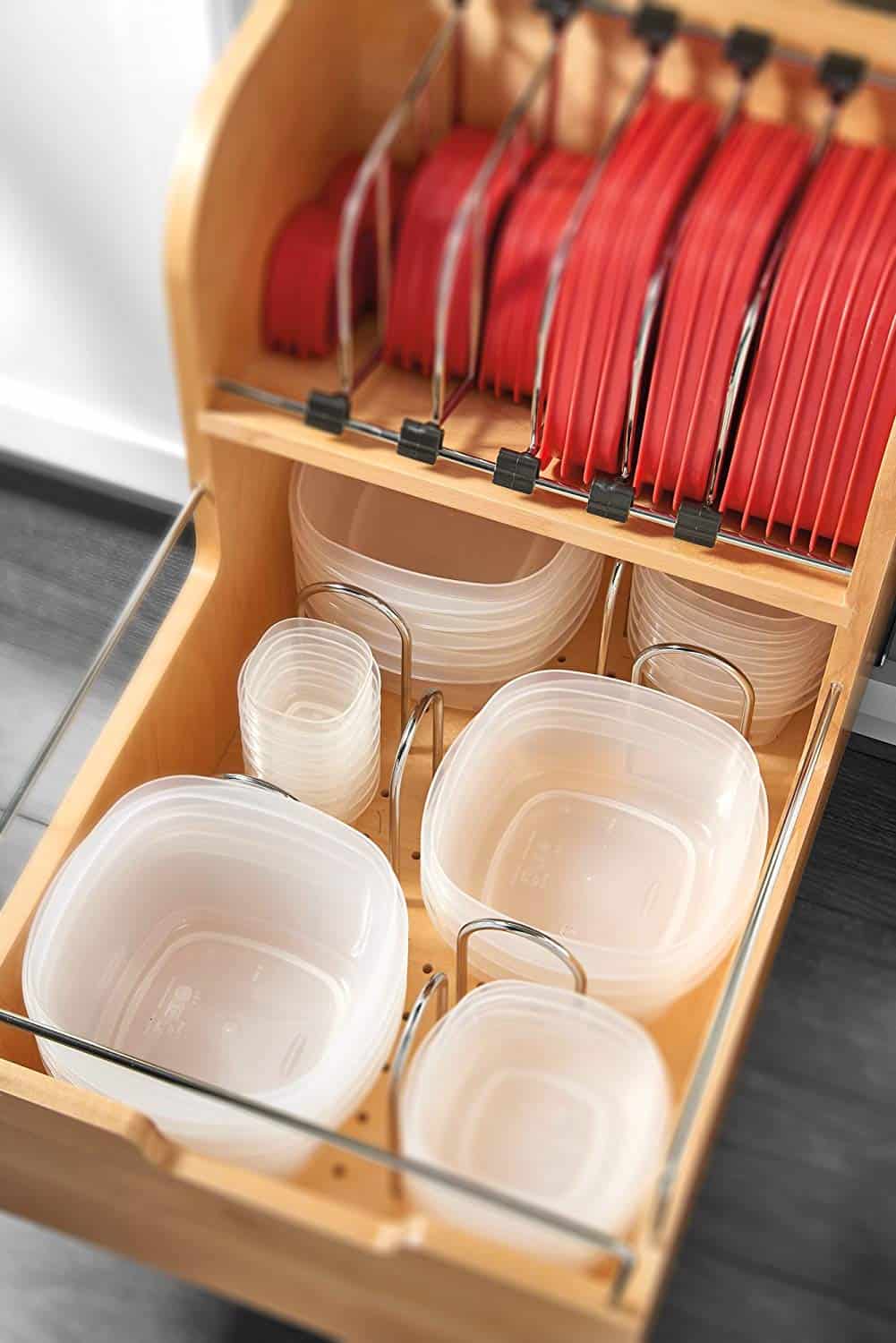
12 Ways To Organize Food Storage Containers Organization Obsessed
1. Use an office organizer. Think outside the box, or rather, look outside the kitchen, and consider one of those file holders/mail organizers that you typically see in an office. Hang it inside your cabinet with removable Command Hooks. Then, simply slip your storage container lids inside, with the bigger lids toward the back, so you can see.

4 Easy Ways to Organise your Tupperware and Food Storage Containers
Accessories and Other Small Items. There are several storage options for these items. You can use accessory boxes to store scarves, gloves, hats, chunky jewelry, and hosiery, but these boxes can also hold other small items. Some ideas include small tools, cables and wires, desk accessories, toys, and travel toiletries.
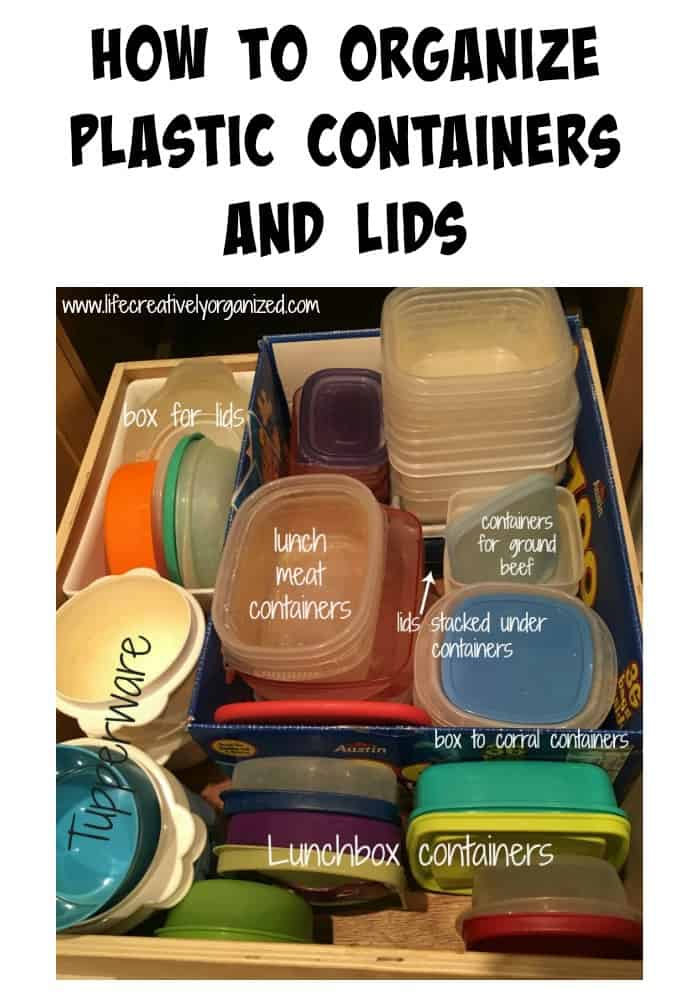
How to organize plastic containers and lids LIFE, CREATIVELY ORGANIZED
was $ 23.53. Adding a pegboard to drawers or slide-out cabinets is another clever way to keep different food storage containers separated and tidy. You can pull this together with simple hardware store supplies or buy a ready-made pegboard kit — like this set from Umbra — and assemble it flat inside your drawer. Buy Now.
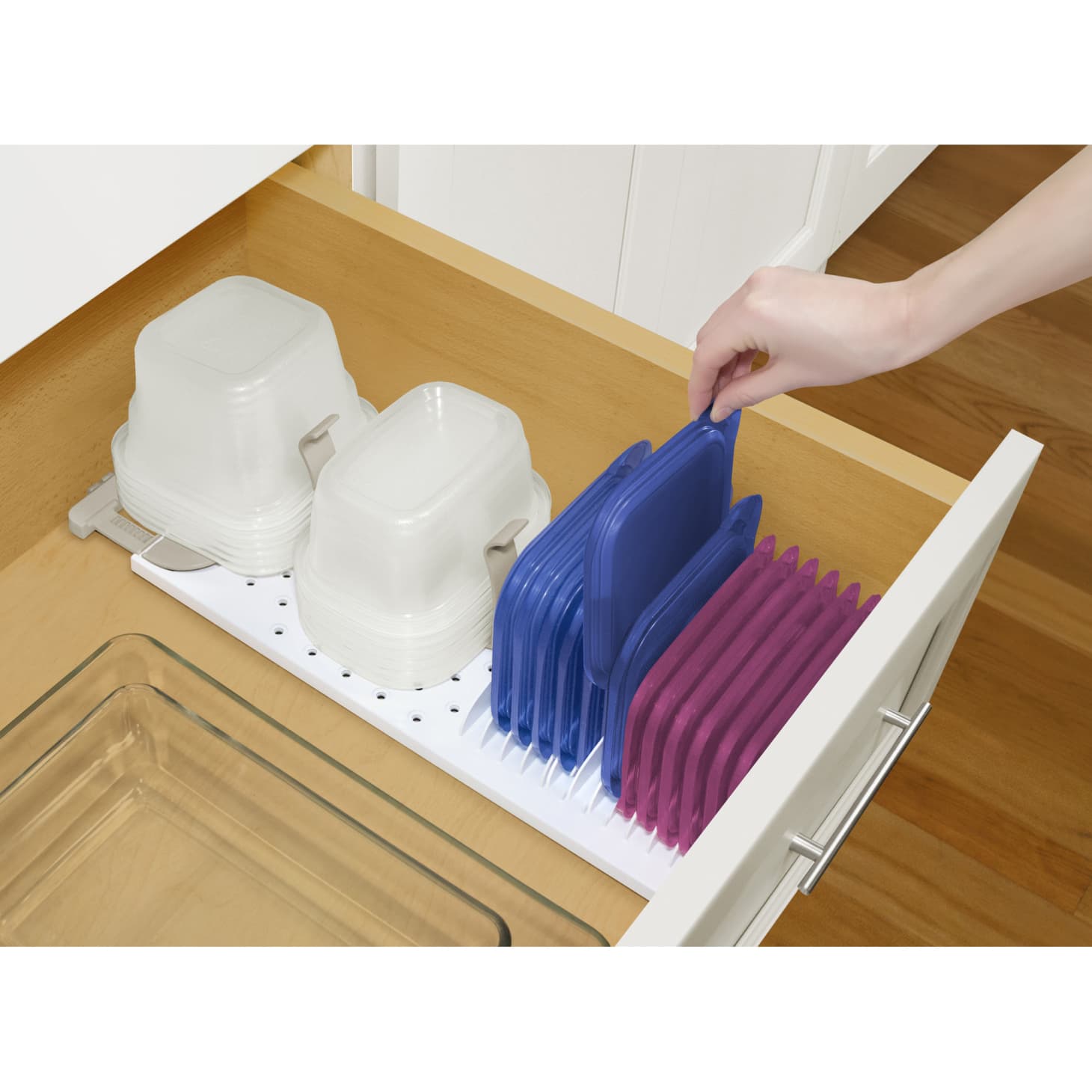
A Neat and Easy Way to Store Your Plastic Containers Kitchn
Then, get all of the same sized containers and stack them, putting the lids inside. "Take another large container and put your already-made stacks inside," she says. "This might take a bit of puzzle work.". When that's done, store the lids inside the smaller containers or on the side of the big container. "Store your big container.

10 Clever Ways to Organize Tupperware and Food Storage Containers in 2020 Tupperware
Pair Your Containers With Their Lids. Pair as many containers with their lids as you can, and then weed out the extras. "When organizing anything, the first step is to clear out clutter," says Zaslow. "Get rid of any unmatched pieces, any that are past their prime, and any you don't like." This includes saying goodbye to extra takeout.

How to organize plastic containers and lids LIFE, CREATIVELY ORGANIZED
On the bottom of plastic food storage containers, you'll find a tiny triangle with a number (resin identification code) ranging from 1 to 7. This number indicates what the plastic is made of. In general, the safest choices for food use are numbers 1, 2, 4 and 5. The American Academy of Pediatrics recommends avoiding plastic containers with.

How to Organize Your Plastic Containers Organize
A. The best way to organize plastic containers and lids is to stack them according to size and shape. You can also use drawer organizers or storage bins to keep everything neatly in place. Another great option is to use a dish rack to store lids vertically, making it easy to find the right one when you need it.

A Neat and Easy Way to Store Your Plastic Containers Kitchn
Are your food storage containers overflowing? Are lids missing? Do you have a place for your lunch boxes? In this video, I share with you 3 Tips on How to Or.

Organization for plastic containers Organizing Ideas Pinterest My life, Bowls and
Use magazine racks. Use a space saver. Use a Lazy Susan. Show 3 more items. Wrangle your plastic containers and the lids so that you have the size you need and you don't go searching for the top. These unique ways to store plastic containers can help you get your plastic drawer under control once and for all.

12 Ways to Organize Tupperware & Food Storage Containers Apartment Therapy
First, before putting away plastic containers, make sure they are spotless and dry. The growth of mold and germs will be stopped. Second, sort plastic storage bins and totes by size for easy access. This will reduce clutter and make it simpler to track for the required storage unit.
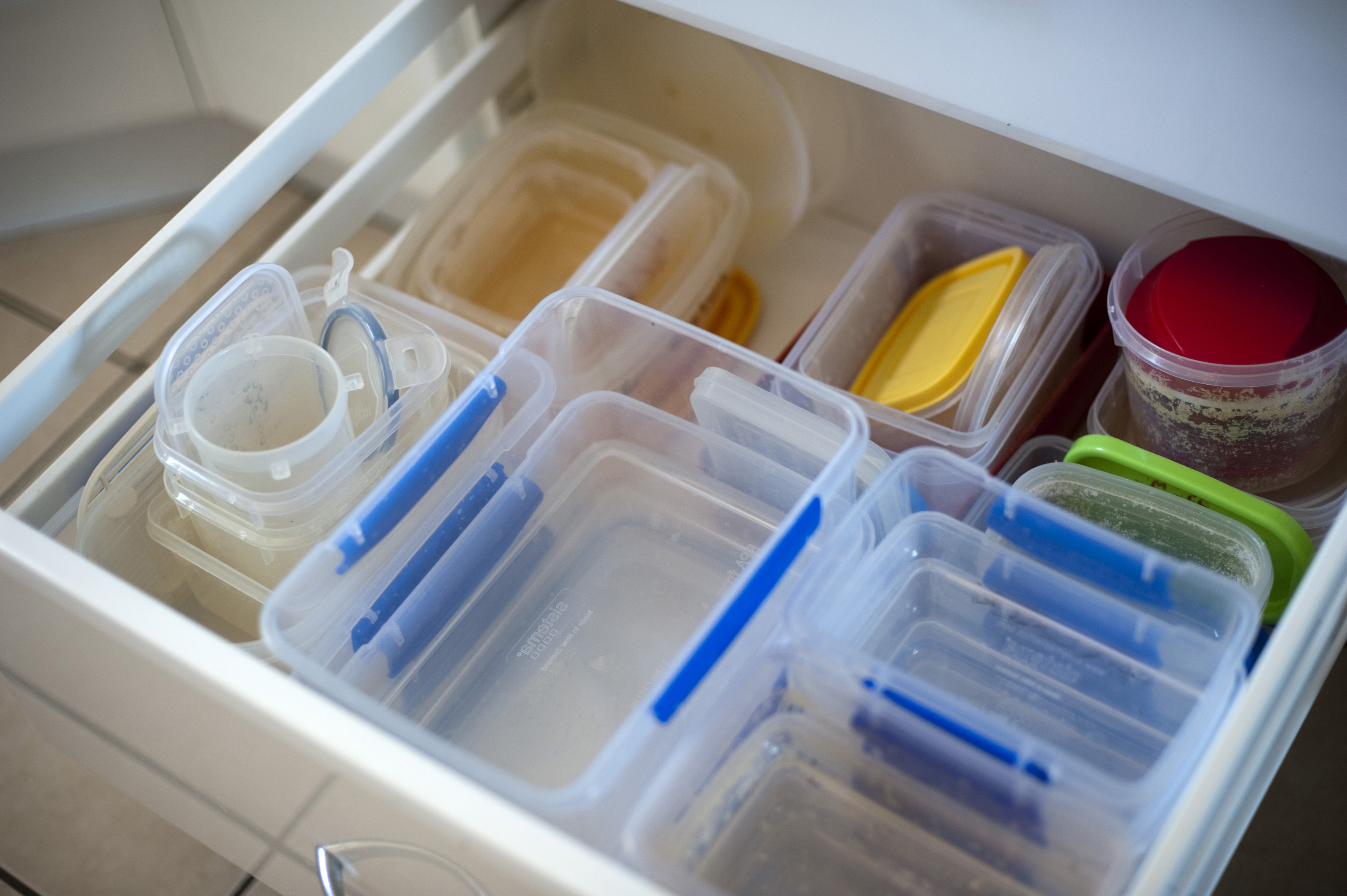
Free Stock Photo 8144 Plastic kitchen containers freeimageslive
Instant plastic container organizer that cost just a few dollars to make. All you do is nestle the same size containers and lids together, and you have the ideal storage station for your plastic food containers. Tip: You could even skip the hot glue step if that's just not in the cards. Just nest the napkin holders in the pan instead for a.

How to store plastic containers Kidspot Plastic container storage, Organize plastic
Gather up all of your containers. First thing to do is to gather all of your plastic containers and lids from throughout your kitchen. As you sort them, put the correct lids with each container. When you are done sorting, set aside any containers or lids that don't have matches. We'll deal with those shortly.

Plastic Container Organization... This looks doable Organize plastic containers, Container
Juice Jug. Fashion a large juice jug into a plastic bag organizer by cutting off the bottom of the jug and stuffing that end with plastic bags. Pull your bags through the spout. Use a knife to cut a hole into the side of your jug so you can hang it from a hook or use a command strip to hang it on the inside of your cabinet.
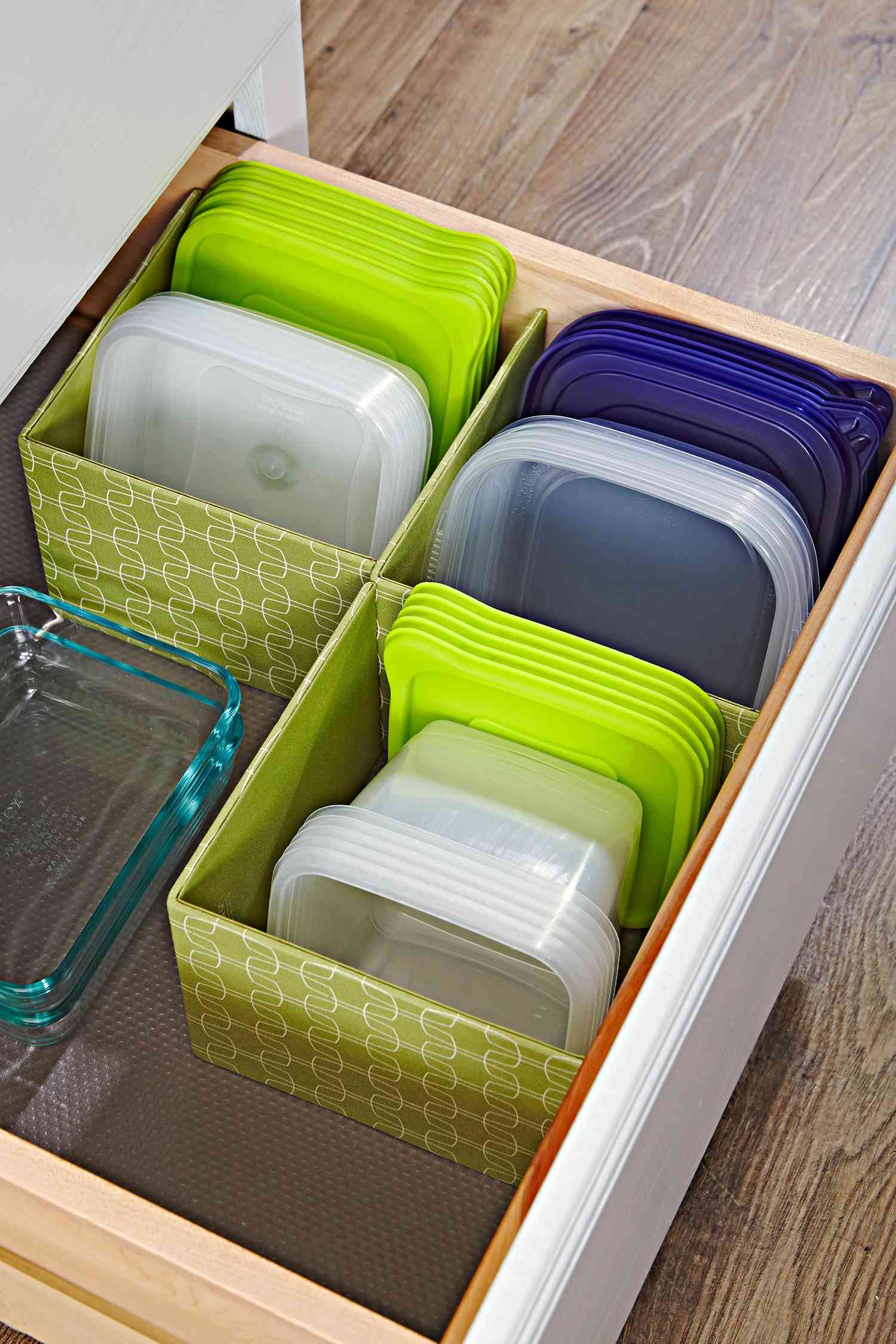
Plastic Containers Storage Ideas Plastic Containers Lids Organize Container Lid So
Start by emptying your container. Remove the dead vegetation, and if the plant that was in the pot didn't have any disease issues, compost the vegetation. If the plant was diseased, throw the vegetation away. You can also compost the soil that was in the container. However, do not reuse the soil. Most potting soil is not really soil at all, but.